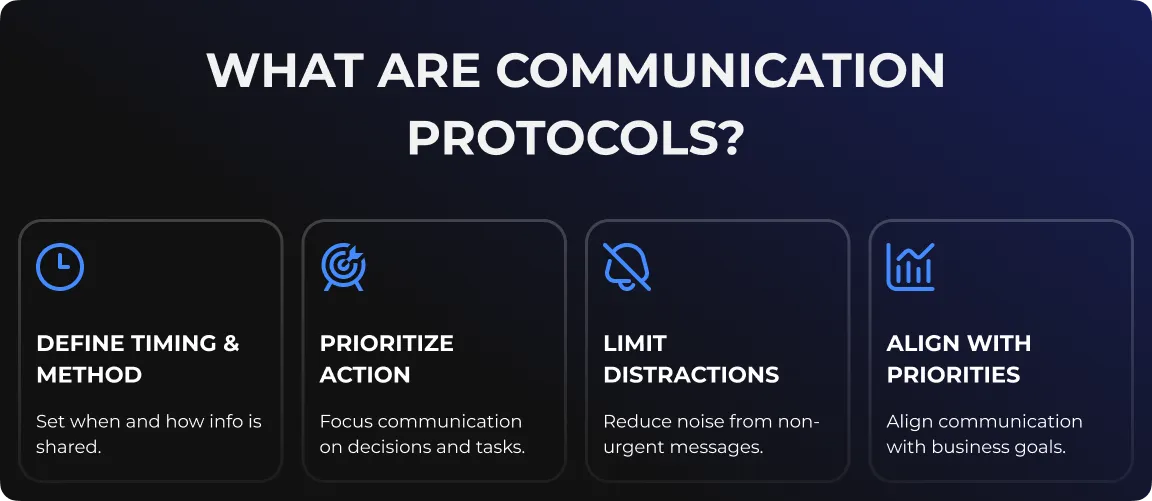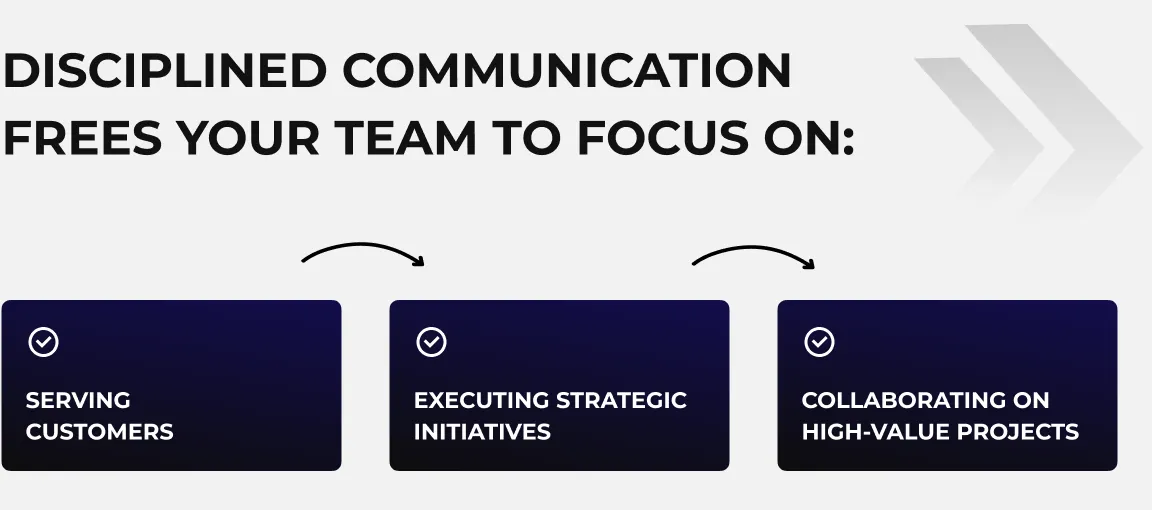How Communication Protocols Reduce Noise and Boost Execution

Introduction
In today’s always-on workplace, communication often becomes noise. Endless emails, constant Slack messages, and “reply all” chains overwhelm teams, pull focus from strategic work, and slow execution.
To stay productive, organizations need communication protocols that protect focus while keeping teams informed and aligned.
The Cost of Unstructured Communication
When communication lacks discipline:
- Teams get stuck in “email jail,” spending hours managing inboxes.
- Leaders spend more time managing stakeholders than serving customers.
- Execution slows as teams react to constant internal noise.
- Important messages get lost in the clutter.
Poor communication management erodes productivity and performance.
What Are Communication Protocols?
Communication protocols are structured guidelines that:
- Define when and how information is shared.
- Prioritize action-oriented communication.
- Limit distractions from non-urgent messages.
- Align rhythms of communication with business priorities.
By establishing discipline, companies create space for focused, high-value work.

Best Practices for Effective Communication Protocols
1. Designate Administrative Communication Days
- Reserve Monday and Friday for reports and updates.
- Keep mid-week (Tuesday–Thursday) open for client work, execution, and collaboration.
2. Enforce TO / CC / BCC Rules
- TO: Only for individuals required to take action.
- CC: For visibility only.
- BCC: Use sparingly.
Encourage inbox rules that filter CCs into “Review” folders for set times.
3. Set Cadence for High-Value Meetings
- Weekly team huddles for alignment.
- Monthly reviews for deep dives.
- Avoid ad-hoc meetings that break focus.
4. Limit Internal Slack/Chat Interruptions
- Create “focus blocks” with minimal interruptions.
- Use status indicators to signal availability.
5. Encourage Clear, Action-Oriented Emails
- Use subject lines with purpose (e.g., “ACTION REQUIRED: Proposal Review”).
- Keep emails concise with clear asks.

Real-World Example: Reducing Noise, Boosting Focus
A mid-sized services firm adopted communication protocols and achieved:
- 30% fewer internal emails mid-week.
- Faster responsiveness to clients.
- Higher team satisfaction due to fewer distractions.
- Quicker turnaround on strategic projects.
The Payoff: More Time for What Matters
Disciplined communication frees teams to:
- Serve customers better.
- Execute strategic initiatives faster.
- Collaborate more effectively.
Less time in email means more time driving results.
Final Thoughts
Communication should empower execution, not overwhelm it. Structured protocols reduce noise, enhance focus, and enable teams to perform at their best.
👉 Want to streamline communication and boost execution? Schedule a Communication Audit with Forward Thinkers.
